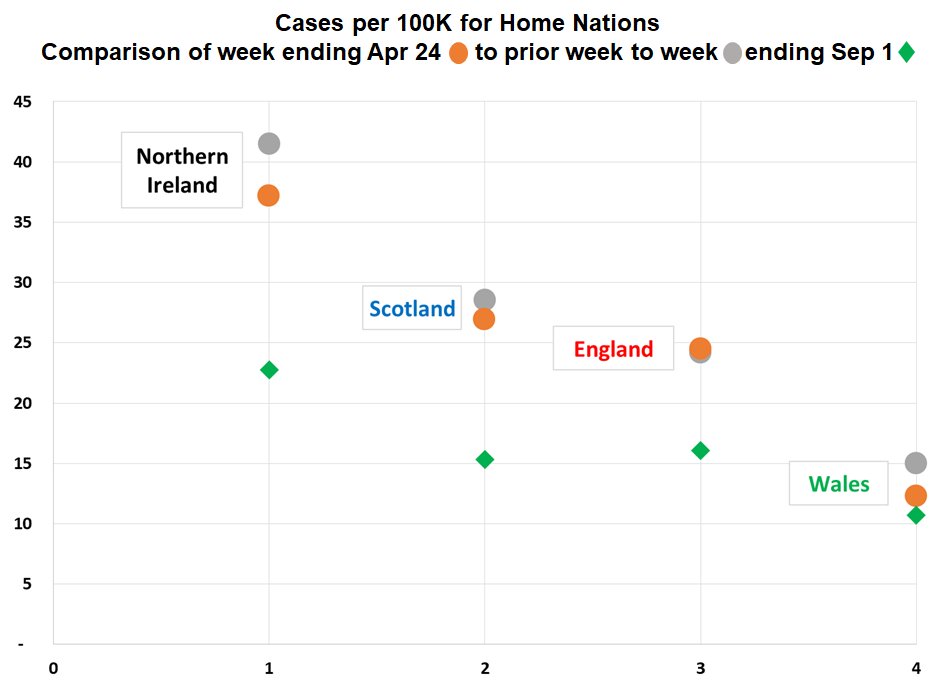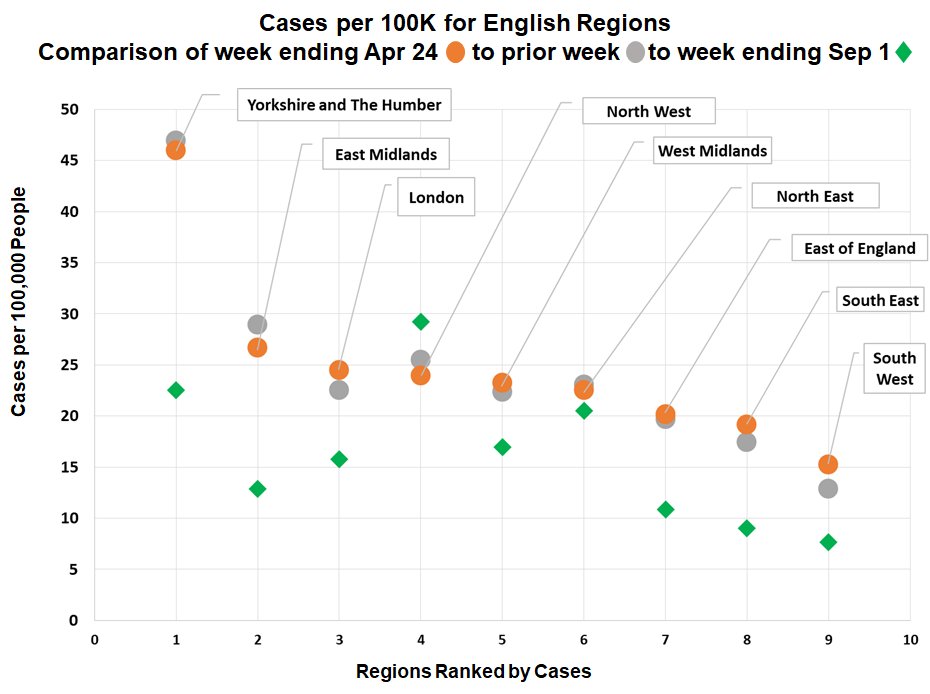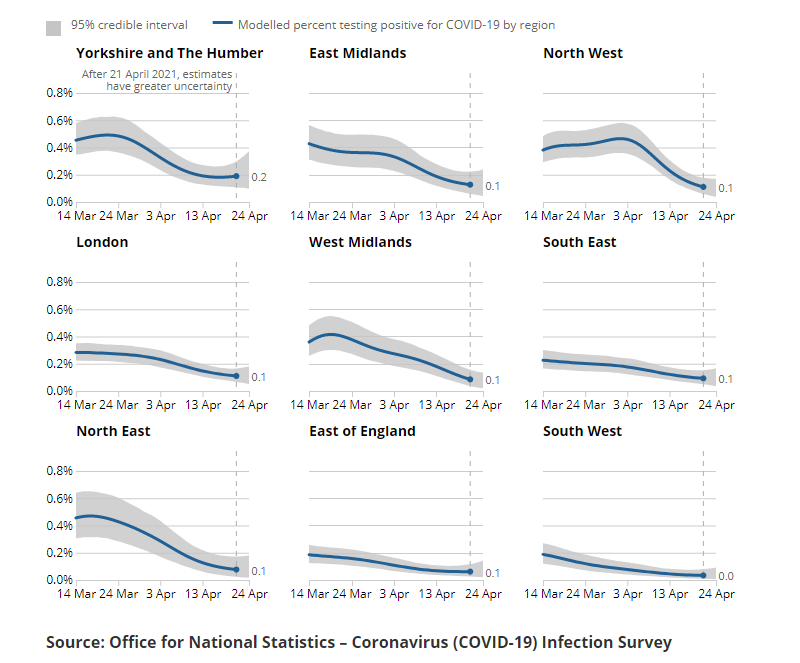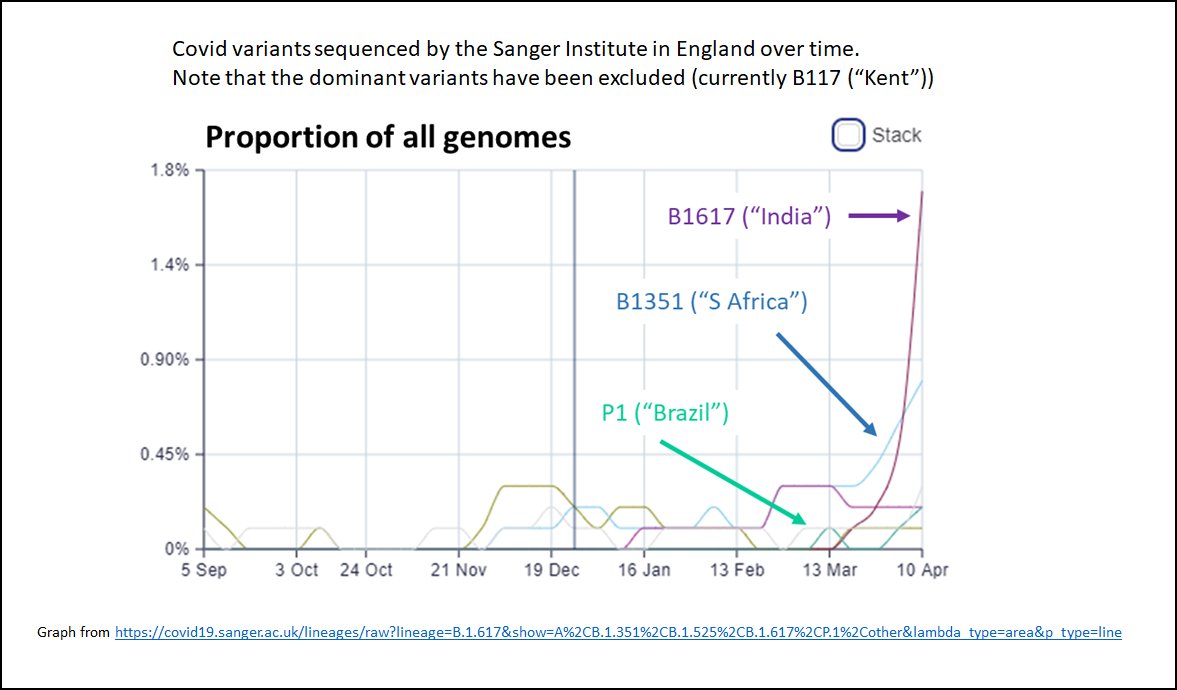
THREAD update on variants:
Today PHE released more variant data (& split the B1617 ("Indian") variant into 3 subtypes).
Big increase with 400 overall cases in UK - closing in on B1351 (S.African variant).
Guardian article:
theguardian.com/world/2021/apr…
PHE
gov.uk/government/pub…
Today PHE released more variant data (& split the B1617 ("Indian") variant into 3 subtypes).
Big increase with 400 overall cases in UK - closing in on B1351 (S.African variant).
Guardian article:
theguardian.com/world/2021/apr…
PHE
gov.uk/government/pub…
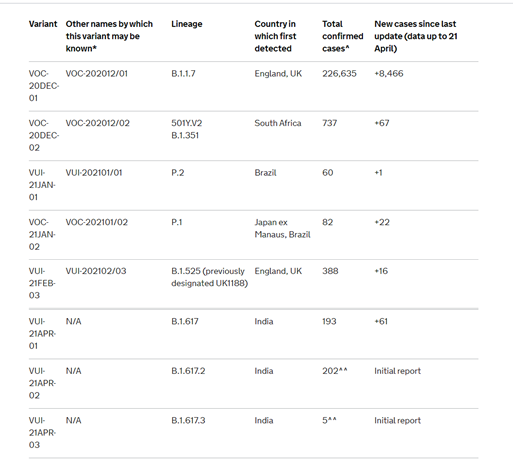
The COVID-19 Genomics UK Consortium (COG) release specimen data by date of test taken - so we can track numbers over time.
NOTE: COG specimen data contain some duplicates (ie. more than 1 test per person) but nums consistent w PHE & trends still evident. England data only below
NOTE: COG specimen data contain some duplicates (ie. more than 1 test per person) but nums consistent w PHE & trends still evident. England data only below
655 spotted tests of S.African & 497 of Indian variant(s) - but clear v rapid increase in Indian variant in 3 wks to 17 Apr
Most are travellers (PHE), but each carries a risk of onward transmission if traveller infects houshold or doesn't isolate
herefordtimes.com/news/national/…
Most are travellers (PHE), but each carries a risk of onward transmission if traveller infects houshold or doesn't isolate
herefordtimes.com/news/national/…
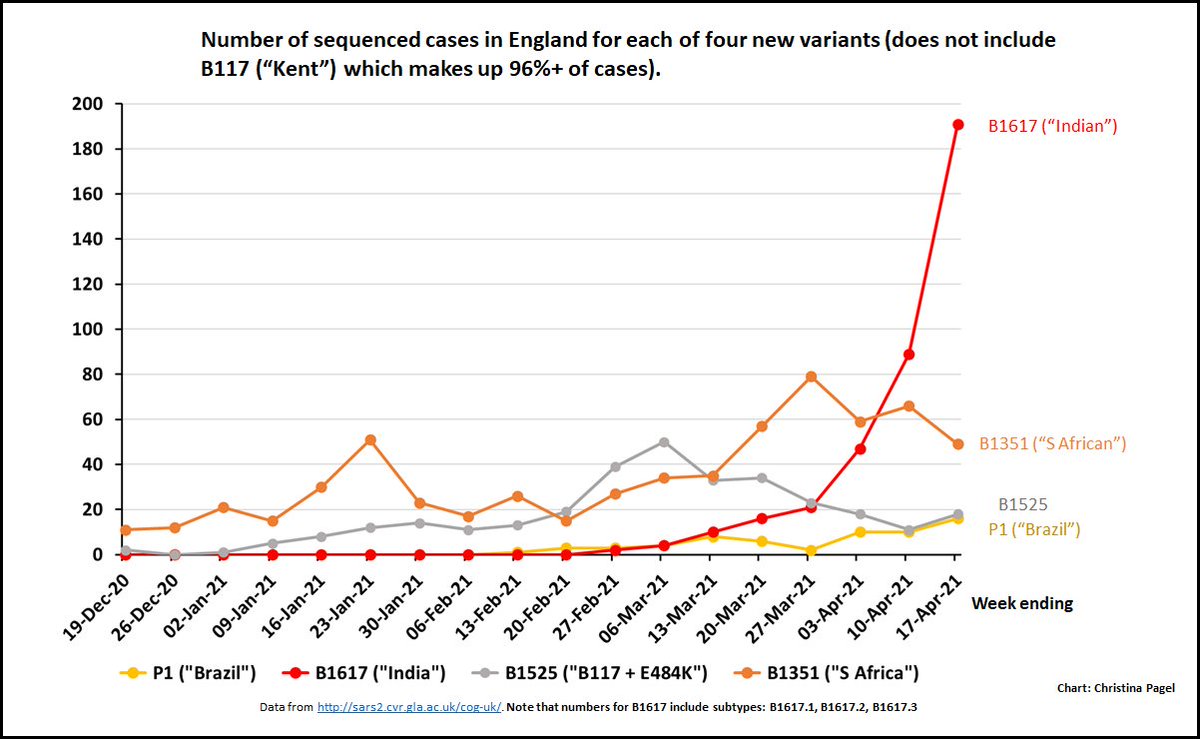
Looking at the subtypes of B1617 (Indian variant) we can see that most are variant subtype 1 or subtype 2 - with subtype 2 really taking off in 2 weeks to 17 April.
They have slightly different mutations but no one quite sure what impact these have.
They have slightly different mutations but no one quite sure what impact these have.
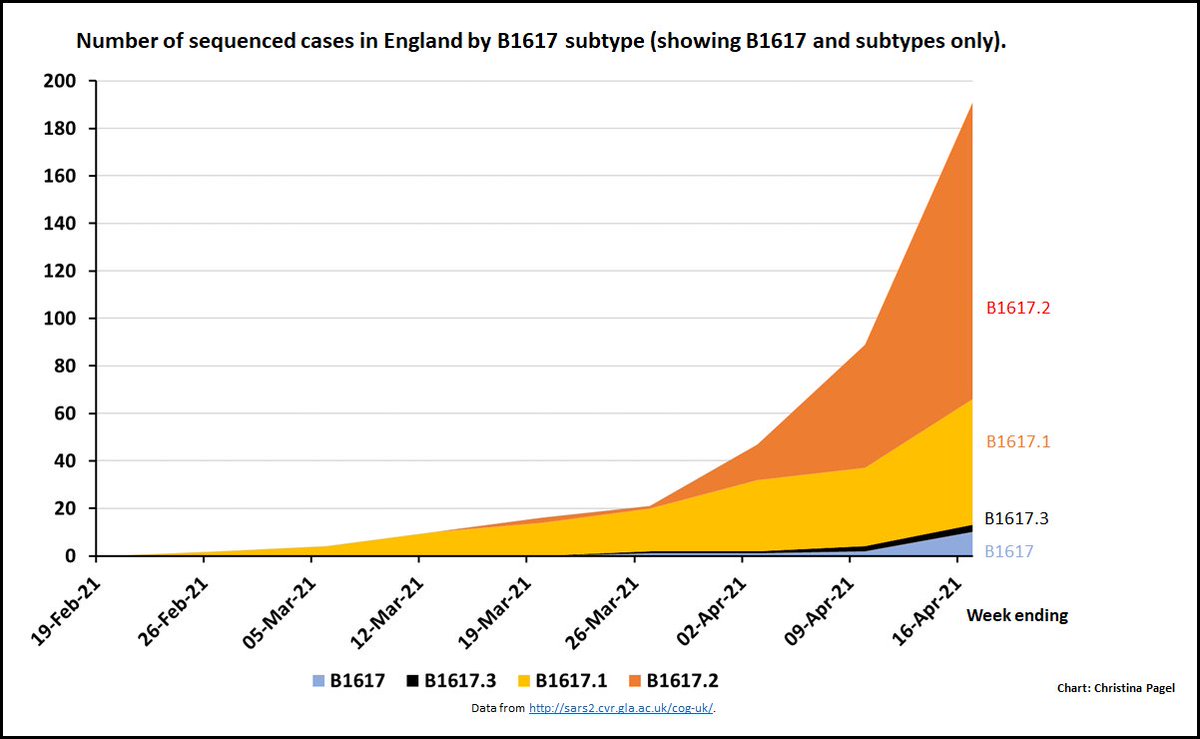
Certainly, the (v v sparse!) data from India shows subtype 2 rapidly growing there too at the expense of subtype 1.
So what we are seeing in UK could just reflect situation in India as people travelled here (likely), or reflect similar variant behaviour in the community here.
So what we are seeing in UK could just reflect situation in India as people travelled here (likely), or reflect similar variant behaviour in the community here.

Because India sequences so few cases & because they are under such terrible pressure, definitive evidence about features of B1617 is not going to come soon.
BUT I think enough reason to not risk it spreading in community in UK. Waiting for certainty risks waiting too long.
BUT I think enough reason to not risk it spreading in community in UK. Waiting for certainty risks waiting too long.
Border measures in UK are pretty woeful - see evidence given to the parliamentary all party group last week from UK border control (page 22 onwards).
Neg tests on departure cannot be verified, no data on adherence to quarantine, v few checks.
d3n8a8pro7vhmx.cloudfront.net/marchforchange…
Neg tests on departure cannot be verified, no data on adherence to quarantine, v few checks.
d3n8a8pro7vhmx.cloudfront.net/marchforchange…
Last week, 47 plane passengers from Delhi to Hong Kong tested positive for covid - 22 of whom only tested positive right at end of isolation period (presumably infected on journey).
Are we so sure we would spot these using our system?
independent.co.uk/travel/news-an…
Are we so sure we would spot these using our system?
independent.co.uk/travel/news-an…
We can't assume we have spotted all cases in UK. We must aggressively trace contacts, surge test, improve border processes.
Regardless of situation here, things are worsening in India. If you feel able, please consider donating to relief efforts /END
e.g
savethechildren.org.uk/how-you-can-he…
Regardless of situation here, things are worsening in India. If you feel able, please consider donating to relief efforts /END
e.g
savethechildren.org.uk/how-you-can-he…
• • •
Missing some Tweet in this thread? You can try to
force a refresh

